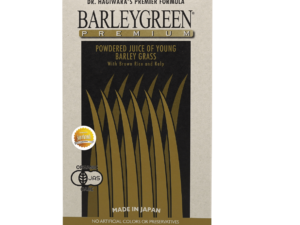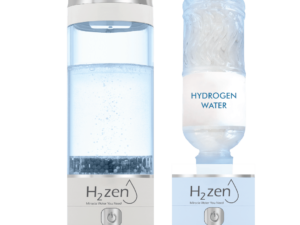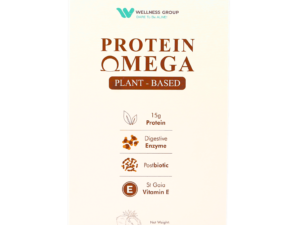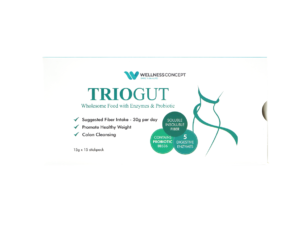Did you know a 2022 randomized trial found measurable biological effects when people took hydrogen-rich water in non-alcoholic fatty liver disease?
Wellness Group Malaysia offers friendly, evidence-aware guidance to Malaysians who want safe, practical ways to add this support alongside standard care.
The guide explains how molecular hydrogen is delivered as hydrogen-rich water, what studies show about oxidative stress and liver function, and where evidence is still emerging.
Readers will learn simple intake tips, how to check dissolved gas levels, device basics, storage advice, and when to ask a doctor. The team is available via WhatsApp at +60123822655, Mon–Fri 9:30 am–6:30 pm and Sat–Sun 10 am–5 pm.
Key Takeaways
- Wellness Group provides plain-language, research-backed support for Malaysians exploring this non-drug approach.
- Clinical trials suggest possible effects on oxidative stress and some liver markers, but this is not a cure.
- Practical tips cover intake, device choice, concentration levels, and storage to keep dissolved gas effective.
- Emerging areas include NAFLD, hepatitis B trends, and peri-radiotherapy quality-of-life benefits.
- Medical oversight matters; contact Wellness Group on WhatsApp for guidance aligned with a doctor’s plan.
Why this ultimate guide matters for Malaysians living with fatty liver disease
Many people in Malaysia now face elevated rates of liver steatosis, and families want clear steps they can trust. This guide turns peer-reviewed findings into plain-language advice that fits daily life.
It frames hydrogen and related intake as complementary to medical treatment, diet, and exercise. Readers learn what clinical reports say about oxidative stress and quality-of-life effects during radiotherapy, and how randomized designs inform those claims.
The guide helps patients weigh safety, dosage, timing, and how to keep dissolved gas levels steady at home. It also explains study types so readers can check original sources on google scholar and judge relevance to their own care.
- Local, practical tips that suit Malaysian routines.
- Evidence summaries from google scholar and clinical reports.
- Clear steps to discuss with a doctor and track lab values.
Wellness Group Malaysia offers local support via WhatsApp +60123822655. Hours: Mon–Fri 9:30 am–6:30 pm; Sat–Sun 10 am–5 pm. They act as a bridge between research and everyday application.
Understanding fatty liver and NAFLD in plain language
Understanding how fat builds up in the liver helps patients spot risks and act early.
Non-alcoholic vs other causes
Fatty liver means excess fat stored in the liver. If it is not due to alcohol or drugs, clinicians call it non-alcoholic fatty liver. That distinction guides tests and treatment.
Risks, symptoms, and when to see a doctor
Common risks in Malaysia include central weight gain, high blood sugar, and abnormal lipids—features of metabolic syndrome.
Early stages often cause no symptoms. Seek medical advice for persistent fatigue, right upper abdominal discomfort, or surprising lab level changes.
- How doctors assess: blood tests (ALT, AST), imaging, and trend monitoring.
- NAFLD spans simple steatosis to inflammation and scarring; early action matters.
- Adjunct approaches like small trials of hydrogen and water are under study alongside diet, movement, sleep, and medical care.
| Stage | Typical findings | Clinical action |
|---|---|---|
| Simple steatosis | Fat on imaging, mild blood changes | Lifestyle, monitoring |
| NASH (inflammation) | Higher enzymes, biopsy may show inflammation | Specialist care, targeted therapy |
| Fibrosis/scarring | Stiffness on elastography, rising enzymes | Close follow-up and treatment |
Wellness Group and hrw group can help direct questions to medical professionals via WhatsApp +60123822655 during business hours. They encourage tracking readings and keeping a simple health journal to share with clinicians and to review google scholar evidence when interested.
What is molecular hydrogen and hydrogen-rich water (HRW)?
Readers will learn what the tiny gas molecule is, how it is dissolved into liquid form, and why concentration matters in trials.
Production and key concentration points
Molecular hydrogen is the smallest gas molecule and diffuses rapidly into tissues and organelles. It becomes a drinkable preparation when dissolved into water, either by bubbling gas under pressure or via a magnesium reaction: Mg + 2H2O → Mg(OH)2 + H2.
Clinical studies often report HRW near 0.55–0.65 mM. Consistent hydrogen concentration at the point of drinking both improves study reliability and affects practical effects on the liver.
Safety, delivery methods, and practical notes
Reviews highlight a favorable biosafety profile in humans and animals. Common administration methods include drinking HRW, inhaling gas, and hydrogen-rich saline in clinical settings.
“Most trials find the preparation is well tolerated with no unusual smell and few adverse events.”
- HRW is the most practical home method; clinical settings may use gas or saline for precise dosing.
- Storage affects dissolved content — drink soon after preparation to maintain hydrogen concentration.
- Patients should view these routines as complementary to prescribed treatment, not a replacement.
Practical tip: Malaysians seeking device checks or product guidance can contact Wellness Group via WhatsApp at +60123822655 during operating hours.
Readers who want to check original trials can search google scholar and consult the hrw group or a clinician before starting any routine.
How hydrogen may help the liver: antioxidant and anti-inflammatory effects
Several experimental reports link small gaseous molecules to reduced oxidative damage in liver tissues.
Key mechanisms include selective neutralization of the most damaging radicals and shifts in protective enzyme levels.
Selective scavenging and enzyme support
Researchers report reduced hydroxyl radicals and peroxynitrite alongside higher superoxide dismutase (SOD) activity in models.
These changes may ease oxidative stress and lower markers clinicians track, such as ALT and oxidative DNA damage.
Signal modulation and cell survival pathways
Studies note changes in NF-κB signalling and reduced IL-6 with more balanced IL-10 responses.
HMGB1-related inflammation appears dampened in several reports, and pathways tied to apoptosis and mitophagy (eg, FUNDC1) show modulation.
“Mechanistic data are encouraging but vary by model and study design.”
- Practical note: Safe, daily intake via HRW is the usual home approach reported by the hrw group and reviewers.
- Readers may search google scholar to review original trials and discuss findings with clinicians.
- Wellness Group offers device-agnostic guidance via WhatsApp +60123822655 during business hours.
Hydrogen water for fatty liver recovery
Clinical trials have begun to test whether short-term routines of dissolved gas beverages change measurable biology in people with non-alcoholic fatty liver.

Randomized controlled evidence in NAFLD: key outcomes and results
The 2022 Antioxidants (Basel) randomized, placebo-controlled trial reported improved oxidative stress markers and modest shifts in select liver-related panels.
Most clinical trials run 4–6 weeks. Some protocols used 1,200–1,800 mL/day split twice daily. Consistency in intake and dissolved gas levels matters to detect change.
From oxidative stress to liver function markers: what improved in trials
Across RCTs the clearest signals relate to oxidative stress biology. Enzyme panels showed variable results; some tracked aspartate aminotransferase among broader measures.
- Practical note: drinking hrw is usually trialed for several weeks and is easy to adopt daily.
- Results differ by baseline health, concurrent therapies, and adherence to diet and exercise.
- Document responses and share readings with your clinician for shared decision-making.
| Domain | Common findings | Typical protocol |
|---|---|---|
| Oxidative stress | Reduced oxidative markers | 4–6 weeks, consistent levels |
| Enzyme panels | Variable aspartate and ALT trajectories | Baseline and follow-up labs |
| Quality of life | Some trials report QOL gains | 0.55–0.65 mM concentration in some studies |
“Beneficial biological effects were seen on oxidative stress markers in the Antioxidants (Basel) 2022 trial.”
The hrw group encourages patients in Malaysia to review google scholar entries and discuss options with a doctor. For protocol ideas tailored to Malaysians, WhatsApp +60123822655 (Mon–Fri 9:30 am–6:30 pm; Sat–Sun 10 am–5 pm).
Mechanisms that matter: metabolism, NADP/NADPH, and lipolysis
Animal multi-omics work shows that prolonged H2 exposure rewires key metabolic routes in the liver.
Preclinical studies report reduced lipogenesis and stronger fatty acid oxidation after sustained exposure. Rat models given prolonged H2 (either enriched drinking or low‑percent inhalation) showed lower serum ALT and AST alongside rises in acylcarnitines and acetoacetate.
Acylcarnitines signal active transport of fatty acids into mitochondria. Acetoacetate reflects increased ketone formation and oxidation. Together these changes point to more fat being burned, not stored.
Why NADP/NADPH matters
NADP emerged from network analysis as a central redox node. Shifts in NADP/NADPH balance coordinate lipid, amino acid, and carbohydrate pathways. This helps explain broad metabolic reprogramming seen in multi-omics data.
Broader metabolic implications
Transcriptomic and metabolomic profiles also showed altered amino acid and carbohydrate pathways. Purine and carboxylic acid metabolites changed too, suggesting a system-wide effect that may reduce visceral fat over time in rodents.
“Network analysis identified NADP as a central regulator of H2-induced metabolic alterations in liver.”
- Multi-omics in animals shows dampened lipogenesis and boosted lipolysis.
- Rises in acylcarnitines and acetoacetate indicate active fat oxidation.
- NADP/NADPH appears to coordinate lipid, amino acid, and carbohydrate shifts.
| Marker or pathway | Direction of change | Practical implication |
|---|---|---|
| Acylcarnitines | Increase | More fatty acid transport into mitochondria |
| Acetoacetate | Increase | Higher fat oxidation and ketone production |
| ALT / AST | Decrease | Improved circulating liver markers in long-term models |
| NADP/NADPH node | Rewired balance | Coordinates shifts across metabolic pathways |
These findings are preclinical and do not guarantee human outcomes. Readers may search google scholar to review the original animal studies and broader analyses.
Practical note: Malaysians seeking tailored guidance can contact Wellness Group via WhatsApp +60123822655 during business hours to discuss how mechanistic insights might fit lifestyle, nutrition, and medical plans. The hrw group and google scholar remain useful resources for deeper reading.
Delivery methods compared: drinking HRW, inhalation, and hydrogen-rich saline
Choosing an administration route changes how much active gas reaches tissues and how easily a routine fits daily life.
Clinical practicality: why drinking hydrogen-rich water is favored
Drinking hydrogen-rich water is the most practical home method. It is simple, low-cost, and easy to add to meals or pauses in the day.
Clinical studies often used concentrations near 0.55–0.65 mM, which are achievable with common devices. That makes daily adherence more likely and tracking changes in liver markers easier.
When higher-precision administration may be considered
Inhalation and saline infusion give tighter dose control. Research used about 4% inhalation in animal models and precise ppm in saline for clinical settings.
These routes suit monitored care, peri‑procedural use, or trials where exact exposure matters. They require clinical oversight and are less portable.
- Pros of drinking: convenience, low maintenance, easy verification at home with simple meters.
- Pros of inhalation/saline: precise levels and predictable tissue exposure under supervision.
- Practical tip: whichever approach is chosen, patients should document subjective changes and lab levels to share with clinicians.
“Consistency in method and verification of levels improves the chance of seeing meaningful effects.”
For device advice and daily routine setup in Malaysia, contact Wellness Group via WhatsApp +60123822655. They can help match a route to lifestyle and a doctor’s plan and point to relevant entries on google scholar and the hrw group. See treatment options at treatment options.
Clinical applications beyond NAFLD: what the studies show
Clinical research extends beyond NAFLD to examine supportive uses in chronic hepatitis B, radiotherapy care, and transplant settings.
Chronic hepatitis B and radiotherapy
One randomized trial enrolled CHB patients who took 1,200–1,800 mL/day, twice daily, for six weeks. They showed improved oxidative stress markers and trends in some enzyme panels without major safety issues.
Radiotherapy studies used concentrations near 0.55–0.65 mM. Patients reported better quality of life scores while tumor control remained unchanged. This suggests a supportive role in symptom control.
Transplantation and perioperative protection
In surgical and transplant models, hydrogen-saturated solutions lowered ALT, AST, and LDH after ischemia–reperfusion. Inflammatory mediators such as HMGB1 and IL-6 fell, and apoptosis markers declined.
“Adjunctive protocols reduced measurable injury markers in clinically relevant models.”
- Key trial notes: durations range from days to weeks and outcomes vary by design.
- Clinical caution: results differ by indication and should not be generalized without clinician input.
- Practical point: patients should monitor enzyme levels and symptoms and discuss plans with specialists.
Wellness Group Malaysia can help interpret google scholar entries and set realistic expectations. Contact via WhatsApp +60123822655 during posted hours to discuss applicability with hepatology or oncology teams and to review hrw group summaries.
Realistic expectations: what hydrogen can and cannot do at present
Readers should expect modest, targeted benefits rather than dramatic cures when exploring adjunct therapies aimed at organ health.
Current evidence shows promising antioxidant and anti‑inflammatory effects in several small randomized trials and preclinical reports. These studies suggest a possible protective effect on the liver, but the results remain limited in size and scope.
Key gaps include standardized dosing, longer follow-up, and direct comparisons across delivery routes. Ongoing trials may clarify clinical value, yet no single protocol is definitive today.
Practical guidance and research checks
Patients should treat this approach as an adjunct to core medical treatment and lifestyle change. Track objective lab levels and symptoms on timelines similar to published study durations to judge personal response.
“Evidence is encouraging but not yet conclusive; rely on peer‑reviewed sources and clinician counsel.”
- Expect modest biological effects, not cures.
- Evidence includes randomized work but remains limited.
- Start with safe, practical routines and review progress with a doctor.
| Topic | Current status | Action |
|---|---|---|
| Evidence base | Small trials, mixed results | Review google scholar and clinician guidance |
| Dosing & levels | Not standardized | Document intake and lab levels |
| Clinical use | Adjunctive support only | Coordinate with treatment team |
For balanced, Malaysia‑focused planning and to discuss study details or the hrw group summaries, message Wellness Group on WhatsApp +60123822655 during business hours.
How to start drinking hydrogen-rich water safely and effectively
A practical, stepwise start helps patients adopt a safe routine and share results with their doctor.
Suggested intake windows, hydrogen concentration, and consistency
Begin simply: divide a daily target into two or three portions. Clinical examples used 1,200–1,800 mL/day over six weeks, split twice daily in some trials. Aim for the study range of ~0.55–0.65 mM hydrogen concentration when possible.
Pick consistent time windows—pre‑meal, post‑exercise, or morning/evening—that fit Malaysian routines. Consistency improves adherence and helps correlate any changes in liver labs with the administration schedule.
Hydration tips, storage, and maintaining dissolved hydrogen levels
Drink each portion soon after preparation. Use closed, non‑reactive containers and avoid shaking. These steps preserve dissolved levels and the measured effects in short trials.
- Choose devices or products that document hydrogen concentration and offer verification methods.
- Verify levels at the point of drinking with simple test kits or meters when available.
- Track intake and note subjective effects and any changes in liver blood tests to discuss with a clinician.
- Maintain overall hydration but avoid overhydration; adjust to personal needs and medical advice.
“Start small, stay consistent, and document results to make shared decisions with your care team.”
| Step | Why it matters | Practical tip |
|---|---|---|
| Split daily intake | Preserves dissolved levels | 2–3 portions, drink within 30 minutes of prep |
| Verify concentration | Ensures study-like exposure | Use meters or test strips at point of use |
| Consistent timing | Improves habit and tracking | Set alarms or pair with meals/workouts |
| Record labs & symptoms | Shows measurable response | Share journal with your doctor |
Local help: Malaysians who want device-neutral setup, reminders, or a checklist can message Wellness Group on WhatsApp +60123822655. Hours: Mon–Fri 9:30 am–6:30 pm; Sat–Sun 10 am–5 pm. The hrw group and google scholar are useful resources; readers are encouraged to search google scholar to review trial details and to consult the hrw group when comparing devices.
Who may benefit: patients, lifestyles, and conditions to consider
Some patients show greater interest in adjunct routines when metabolic markers and enzymes remain elevated despite standard care.
Who to consider:
- People with metabolic syndrome, central weight gain, or a sedentary routine.
- Those with persistently raised enzyme tests or documented oxidative stress profiles.
- Individuals starting structured diet and activity plans who want a low-risk complement.
Practical clinical notes
Discuss with a GP or hepatologist before beginning any adjunct. This ensures compatibility with medications and other interventions.
Start modestly and stay consistent. Reassess after several weeks with repeat tests to check levels and symptoms.
“Adjunct routines may help some people, but measurable outcomes vary and patience is important.”
| Profile | Why they may consider it | Suggested first step |
|---|---|---|
| Metabolic syndrome | High oxidative load and enzyme trends | Coordinate with clinician; try short, consistent routine |
| Sedentary adult | Lower baseline metabolism; potential synergy with exercise | Add modest activity and monitor changes |
| Those with body-composition goals | Preclinical work hints at metabolic shifts | Pair with diet and track progress |
Wellness Group can help Malaysians weigh fit and timing via WhatsApp +60123822655 during business hours.
Readers who want deeper reading may review entries on google scholar and consult the hrw group to compare evidence before starting a trial.
Integrating HRW with diet, exercise, and medical treatment plans
Anchoring a short, repeatable intake habit to meal or exercise times helps patients maintain consistent exposure and track changes.
Evidence suggests a measured adjunct may complement strategies that lower oxidative stress and support metabolic balance. Pair routines with proven treatment and lifestyle steps so results are easier to interpret.
Synergy with Mediterranean-style eating and body-weight management
Choose a plate rich in vegetables, legumes, whole grains, and healthy fats. This pattern supports steady weight control and better metabolism.
- Match intake to meals to keep habits simple.
- Use portion control and mindful oils in Malaysian dishes like stir-fried vegetables and legumes.
- Small, sustainable changes beat short-term extremes.
Coordinating with your hepatologist or GP in Malaysia
Ask a clinician to monitor weight, waist, and key liver levels over weeks. Document timing and subjective effects to share at follow-ups.
“Coordinate adjunct routines with prescribed care and record objective measures.”
| Goal | Action | Why it matters |
|---|---|---|
| Weight & waist | Monthly checks | Tracks clinical response |
| Timing | Link intake to meals/exercise | Improves adherence |
| Lab monitoring | Baseline + 4–8 weeks | Shows measurable effects |
Practical note: Malaysians can request tailored plans from Wellness Group via WhatsApp +60123822655 (Mon–Fri 9:30 am–6:30 pm; Sat–Sun 10 am–5 pm). Review google scholar entries and hrw group summaries when discussing options with a doctor.
Wellness Group Malaysia: guidance, access, and support
Wellness Group helps Malaysians turn peer-reviewed research into clear, practical steps tailored to personal goals.
Personalized recommendations tailored to your health goals
The team reviews study parameters and adapts them to each person’s schedule and tastes. They note common trial volumes (1,200–1,800 mL/day) and target concentrations (~0.55–0.65 mM) when suggesting routines.
Advisors support device choice, content verification, and intake timing aligned with blood tests and clinical monitoring.
How recommendations reference peer-reviewed evidence and best practice
Guidance is evidence-informed and avoids overstatement. Wellness Group cites Google Scholar entries and hrw group summaries to explain likely effects and measured levels.
“They emphasize coordination with clinicians and clear tracking of labs and symptoms.”
- Checklist templates to track adherence and changes in liver markers.
- Curated reading lists so patients can read original studies at their own pace.
- WhatsApp access +60123822655 for setup, troubleshooting, and routine tips.
| Service | What they do | When to contact |
|---|---|---|
| Personal plan | Match study parameters to daily life | Before starting a new routine |
| Device & content checks | Help verify levels and consistency | At purchase or setup |
| Evidence summaries | Curated google scholar and hrw group reviews | Any time patients want more detail |
Open hours: Mon–Fri 9:30 am–6:30 pm; Sat–Sun 10 am–5 pm. Message +60123822655 for quick support that respects culture and daily routines.
Business hours and how to connect with Wellness Group
Wellness Group keeps a clear contact line so Malaysians can ask quick questions and book short consultations.
WhatsApp: +60123822655 is the primary channel for quick consultation and support. Message to ask about routines, device checks, or how published evidence applies to personal care.
Open hours are set to fit weekdays and weekend routines. The team answers within local office days and gives clear next steps if clinical input is needed.
Contact details and what to prepare
- Hours: Monday–Friday 9:30 am–6:30 pm; Saturday–Sunday 10 am–5 pm.
- Prepare recent lab results and a medication list to make the chat productive.
- They share concise summaries, checklists, and links to google scholar entries and hrw group posts on request.
Practical notes: Patients and caregivers can book a brief consultation to align any new routine with ongoing treatment and lab schedules. Written content sent in chat can be saved for later review.
“Messages are replied to during local hours, with clear pointers when clinician review is advised.”
Wellness Group offers language-friendly, culturally aware support tailored to Malaysian daily life. Reach them on WhatsApp +60123822655 during the hours above to discuss levels, expected effects, or next steps.
Choosing quality: devices, water content, and verification methods
Device choice and simple on-site testing determine whether daily routines match published exposure targets.
Generator vs tablet options: generators made by pressure dissolution tend to give steady output. Magnesium-based tablets are easy and portable but show more batch variability. Buyers should check specs and safety certifications before purchase.
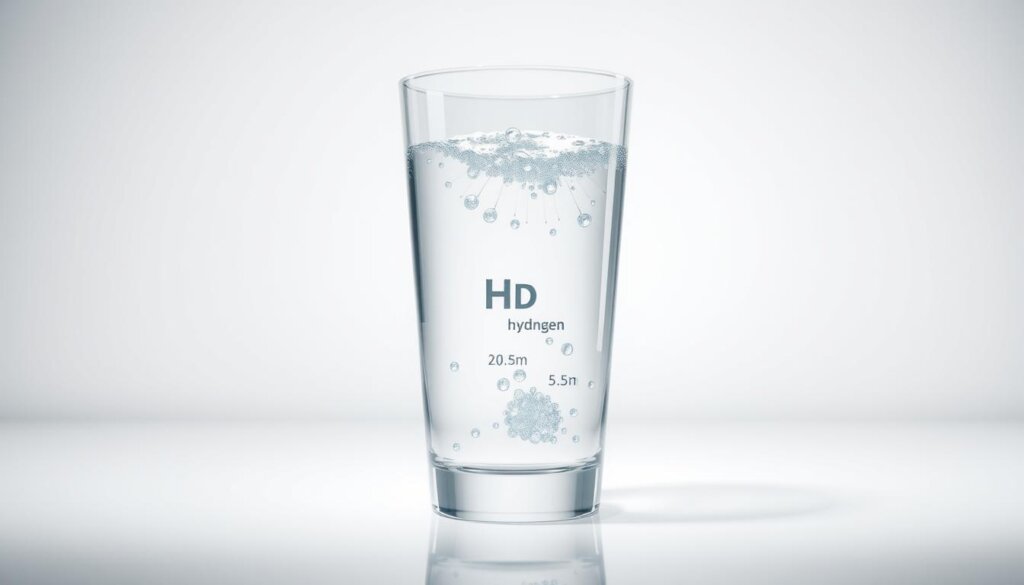
Measuring concentration and ensuring consistency
Confirm content at the point of drinking. Levels drop with time, heat, and agitation. Practical testers include reagent drops, handheld meters, and electrode probes. Re-test after setup changes, filter swaps, or device aging.
- Match device specs to study targets (many trials cite ~0.55–0.65 mM).
- Use closed, nonreactive containers and drink soon after preparation.
- Document readings and maintenance dates to spot trends and troubleshoot.
“Simple workflows and routine checks beat complex setups when real-world adherence matters.”
| Item | Practical tip | Why it matters |
|---|---|---|
| Generator type | Review output curves and certification | Reliability over time |
| Verification tool | Keep meter or reagent kits on hand | Confirms study-like exposure |
| Maintenance | Schedule filter and part changes | Preserves content and safety |
Malaysians seeking device-neutral advice, test plans, or a device checklist may contact Wellness Group via WhatsApp +60123822655. They can point to relevant google scholar entries and the hrw group summaries when needed.
Conclusion
This final note pulls together practical steps and study insights so Malaysians can act with clear expectations.
Evidence indicates modest modulation of oxidative stress and inflammation and metabolic shifts that may benefit the liver. Trial results are promising but limited, so realistic goals matter.
Start with a simple plan: verify hydrogen content and water quality, keep intake consistent, track labs and how the body feels, and review changes with a clinician after several days and weeks.
Device choice, storage, and lifestyle (nutrition, movement, sleep, stress care) help keep daily routines reliable. Do not stop prescribed treatment; always inform clinicians.
For evidence-aware guidance, check google scholar entries or contact the hrw group and message Wellness Group on WhatsApp +60123822655 (Mon–Fri 9:30 am–6:30 pm; Sat–Sun 10 am–5 pm).
FAQ
What is molecular hydrogen–rich water and how does Wellness Group Malaysia use it?
Molecular hydrogen–rich water is ordinary drinking water with dissolved molecular hydrogen gas at a verified concentration. Wellness Group Malaysia offers guidance on drinking hydrogen-rich water as a daily adjunct to standard care, explains device options, and provides evidence summaries so patients can choose safe, consistent products and monitor intake.
Can drinking hydrogen-rich water improve non-alcoholic fatty liver disease (NAFLD)?
Clinical trials show modest, promising improvements in oxidative stress markers, liver enzymes such as ALT and AST, and some metabolic measures in patients with NAFLD. Results vary by study design, dose, and duration, so it is best viewed as a supportive approach alongside diet, exercise, and medical care rather than a standalone cure.
How does dissolved molecular hydrogen act in the body to help the liver?
Molecular hydrogen selectively neutralizes damaging reactive species like hydroxyl radicals and peroxynitrite, supports antioxidant defenses including superoxide dismutase activity, and can modulate inflammatory signaling (for example, NF-κB and cytokines such as IL-6 and IL-10). These effects may reduce oxidative injury and improve metabolic pathways in liver tissue.
What intake patterns and hydrogen concentrations are recommended?
Practical regimens used in studies typically involve regular daily intake spread across the day, with devices or bottled products delivering verified dissolved concentrations. Wellness Group Malaysia recommends consistency and verification of concentration with reliable meters or third‑party testing; specific dose plans should be tailored with a clinician.
Is drinking hydrogen-rich water safe? Are there side effects?
Dissolved molecular hydrogen has an established safety profile at concentrations used clinically. Trials report few adverse effects. It is non-toxic and generally well tolerated, but patients on complex medication regimens or with advanced liver disease should consult their hepatologist before starting any adjunct therapy.
How soon might someone expect to see changes in liver tests or symptoms?
Some studies report biochemical improvements within weeks to months, but timelines vary by baseline disease severity, concurrent lifestyle interventions, and adherence. Realistic expectations are gradual biochemical and symptomatic improvements rather than rapid reversal.
Can hydrogen-rich water replace medical treatment for chronic hepatitis or advanced liver disease?
No. While research explores benefits in conditions beyond NAFLD, including chronic hepatitis B and radiotherapy-related dysfunction, dissolved molecular hydrogen should not replace proven antiviral, surgical, or pharmacologic treatments. It may serve as an adjunct under clinical supervision.
How does drinking hydrogen-rich water compare with inhalation or hydrogen-rich saline?
Drinking hydrogen-rich water is the most practical, noninvasive method for daily use and shows beneficial systemic effects in trials. Inhalation and hydrogen-rich saline allow higher, controlled dosing and suit specific clinical settings. Choice depends on the therapeutic goal, required precision, and practicality.
Who is most likely to benefit from adding hydrogen-rich water to their routine?
Individuals with metabolic syndrome features, mild-to-moderate NAFLD, elevated liver enzymes from metabolic causes, or high oxidative stress profiles may see the most benefit. Patients should work with their GP or hepatologist to determine suitability based on their overall health and medications.
How should hydrogen-rich water be stored and handled to preserve dissolved gas levels?
Store in sealed containers, avoid prolonged exposure to air, and keep bottles cool and away from direct sunlight. If using a device, follow manufacturer guidelines for timing between generation and consumption to maintain target concentrations.
Are there quality standards or ways to verify hydrogen concentration?
Yes. Reputable devices and bottled products provide verified concentration data, use certified meters (dissolved hydrogen probes), or submit third‑party laboratory testing. Wellness Group Malaysia emphasizes verification to avoid subtherapeutic or inconsistent dosing.
Can people combine hydrogen-rich water with dietary and exercise interventions?
Absolutely. Evidence suggests best outcomes occur when adjunct therapies are paired with Mediterranean-style dietary patterns, weight management, and regular physical activity. Coordinating these interventions with clinical care yields the most meaningful liver health gains.
Does drinking hydrogen-rich water affect common liver enzymes and metabolic markers?
Trials report improvements in liver enzymes (ALT, AST), reductions in oxidative stress markers, and favorable shifts in lipid or glucose metabolism in some cohorts. Findings depend on study length, dose, and participant characteristics, so monitoring by blood tests is recommended.
Where can Malaysians get reliable advice or purchase verified products?
Wellness Group Malaysia provides consultations, device recommendations, and peer-reviewed evidence summaries. For quick support, contact their WhatsApp line at +60123822655 during business hours to discuss personalized options and access verified products and services.
What are current research gaps and the outlook for future trials?
Larger, longer randomized controlled trials are needed to pin down optimal dosing, long-term safety, and which patient subgroups benefit most. Ongoing research is exploring metabolic nodes like NADP/NADPH, lipogenesis, and acylcarnitine profiles to clarify mechanisms and clinical endpoints.
